I was away from the farm for 16 days in April, and when I returned last week it was to a different world than I’d left. I completely missed the flowering of the earliest ornamental trees, the cherries and crabapples, but the dogwoods are in full bloom. The spring continues the cool and damp weather pattern of the winter, which is actually nice as the low temperatures keep the blooms around much longer than they do during springs that shoot right to 85 degrees and stay there.
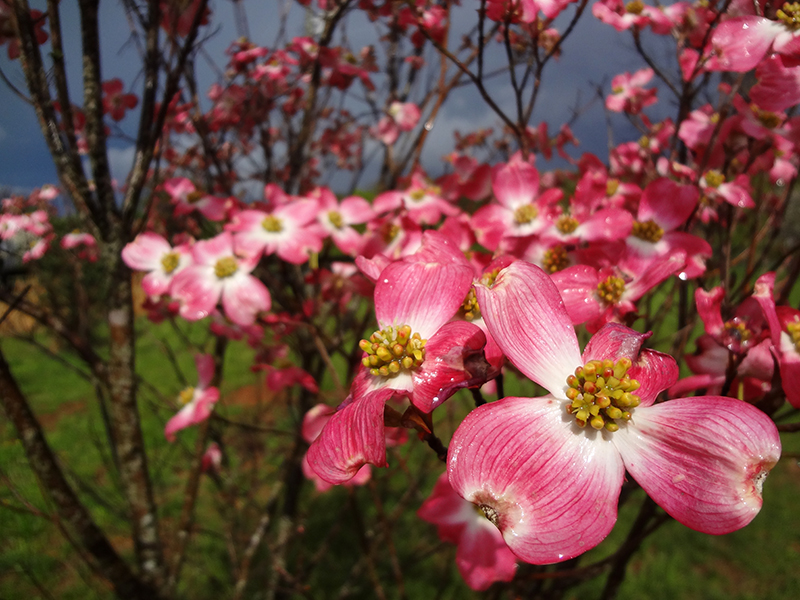 Dogwood ‘Cherokee Brave’
Dogwood ‘Cherokee Brave’
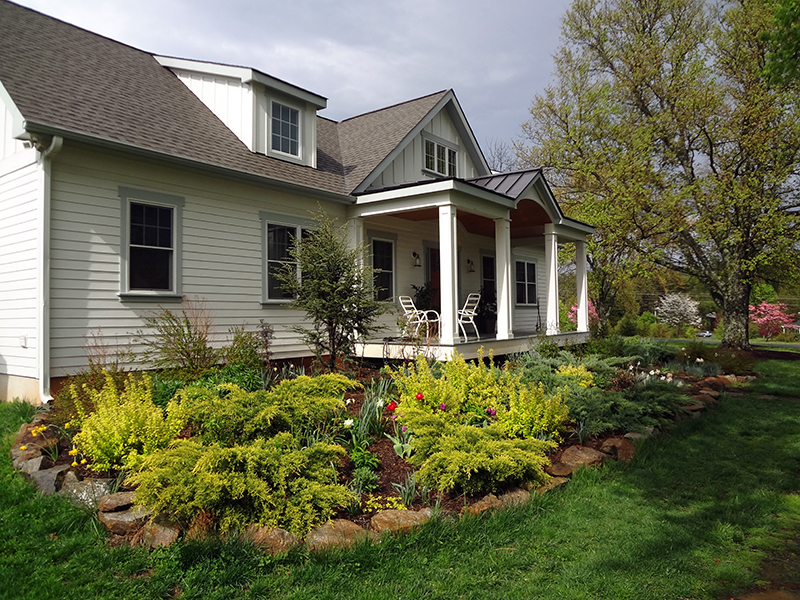
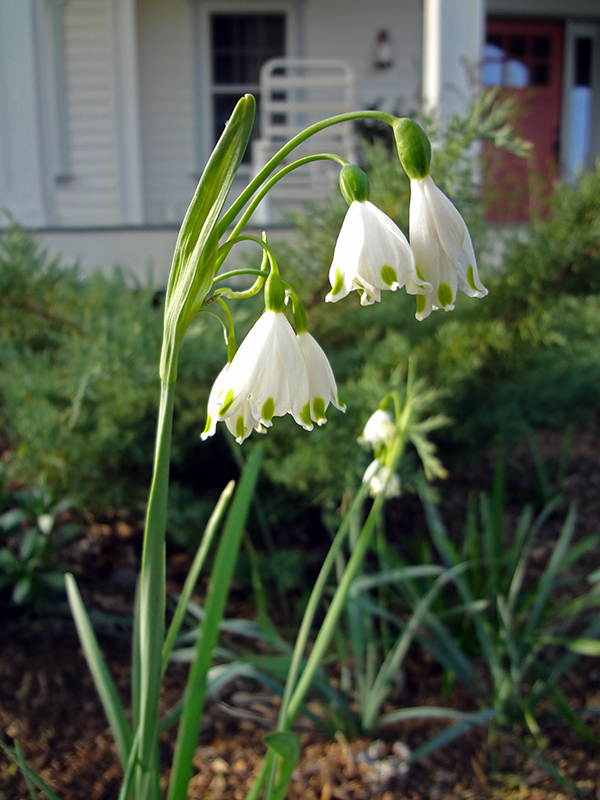 Leucojum aestivum ‘Gravetye Giant’
Leucojum aestivum ‘Gravetye Giant’
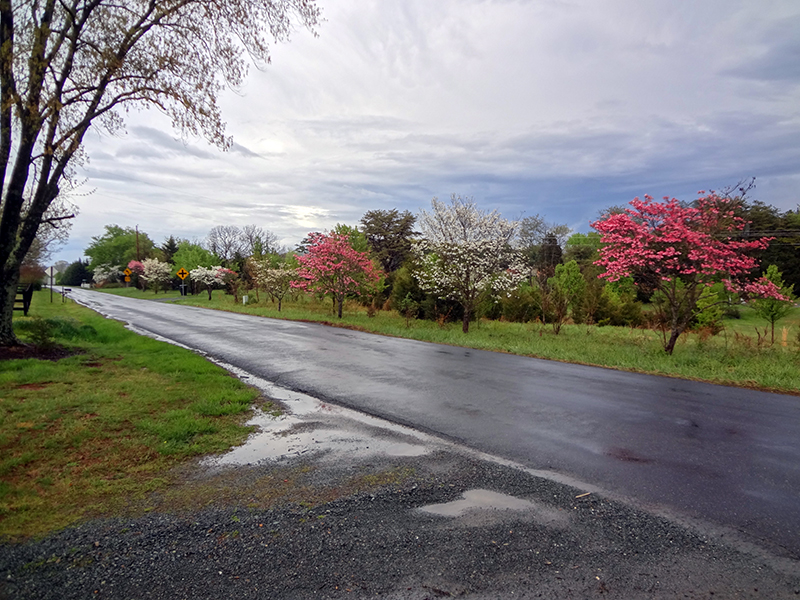
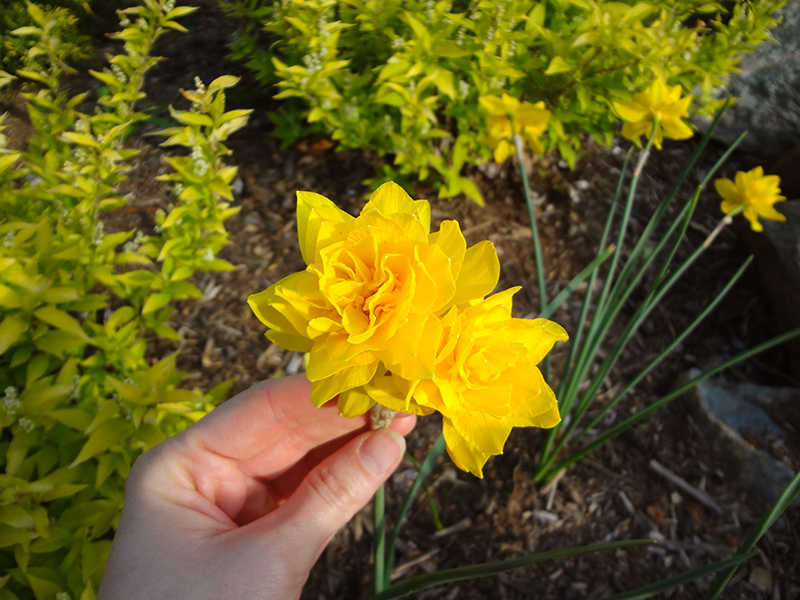 Narcissus ‘Rip van Winkle’
Narcissus ‘Rip van Winkle’
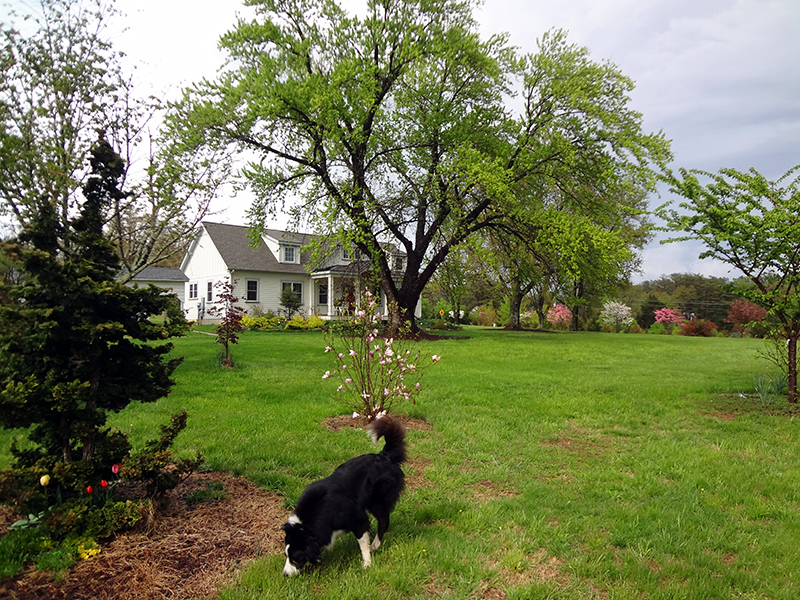 Magnolia ‘Jane’ (right behind Tuck)
Magnolia ‘Jane’ (right behind Tuck)
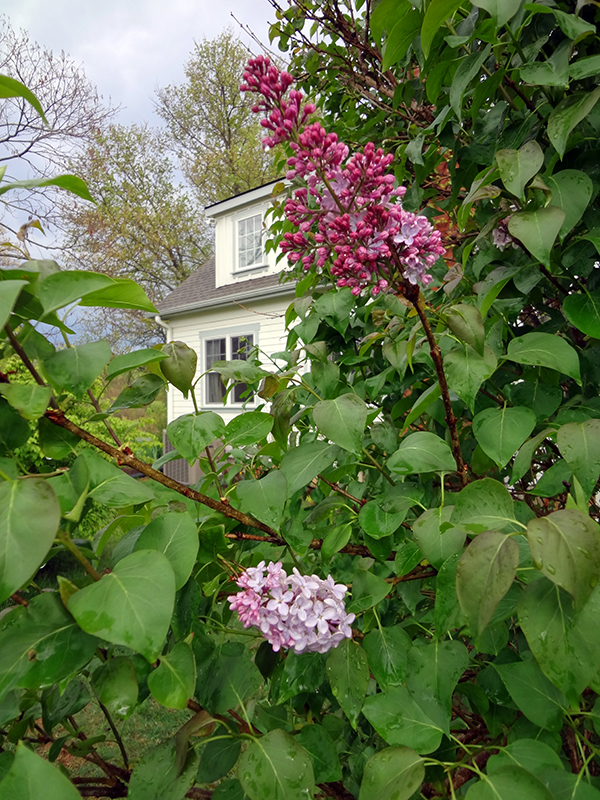 Homestead lilac
Homestead lilac
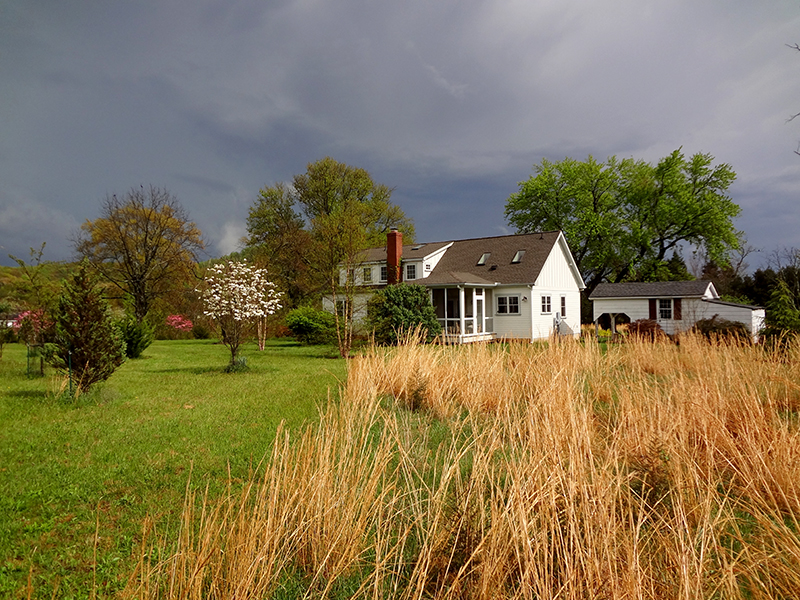
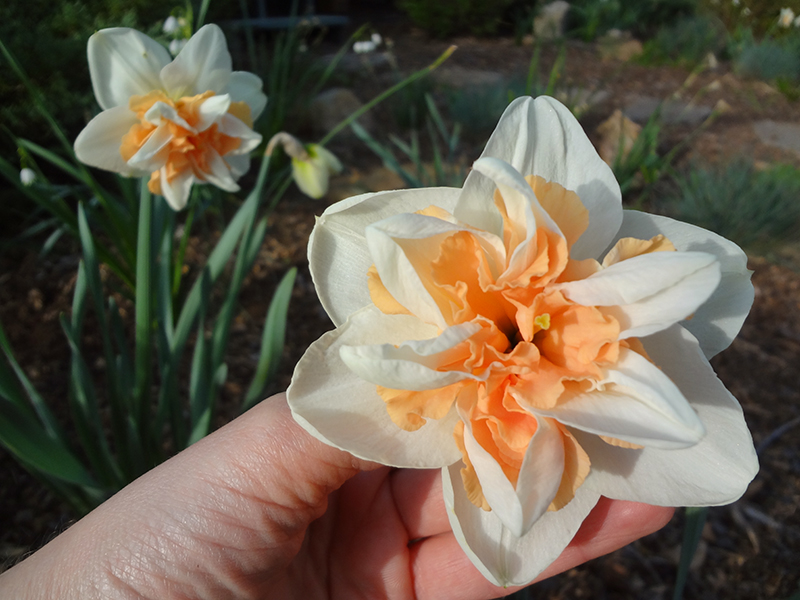
Narcissus ‘Delnashaugh’ is definitely my favorite of the bulbs added last fall—a wonderful coral/apricot color and huge blooms. Daffodils are up there in my top three flowers—my dream is to have great fields full of naturalized drifts, and then a whole other specimen collection for up-close appreciation. The bulbs I added to the front garden last fall are a good start toward this plan.
After such a long, cold, and snowy winter, I am especially appreciative of these spring blooms. I am not, however, especially looking forward to grass-mowing season, which is already underway!
Well the day I was anticipating arrived. Free ranging chickens in fox country means accepting, and living with, the risk that they’ll not come home one night. I’m surprised it took this long, actually. Just yesterday I was saying I hadn’t seen a fox in so long…
All the chickens were out all day today, roaming around. I left for only a short while this afternoon to go to the grocery. The dog was in the house while I was gone. I got back and saw some chickens in the yard, and all six babies were fine by the bushes. I didn’t count the chickens because they often break up into little groups that hang out in different places.
Tonight I put the babies to bed in the garage, and then noticed that only a few of the big chickens were hanging around the coop. I didn’t think much of it, as I figured the others were elsewhere. But at dusk I went to close the coop and there were only five chickens in there: Calabrese the rooster, Cora, Oregano, and the two Black Copper Marans hens, one of which is Dahlia. It’s never a good sign when the chickens don’t come home to roost.
So I got a flashlight and poked around all their favorite hidey holes before steeling myself for a trip into the woods. I knew what I would find, in some state or another. The chickens had taken to raiding the compost pile, which is set just into the woods, which is technically fox territory. I tried to keep it hidden from the birds, but once they discovered the delicious worms and solider fly larvae and food scraps, it became a place they visited several times a day.
Along the path into the woods, right where the snake appeared Monday, I found my first clump of black feathers. Then many, many more all the way to the compost pile. So that’s either Lilac or Iris, or both. The two Lavender Orpingtons are missing as well, but I didn’t find any of their feathers yet. I called for them, hoping they’d be hiding or injured and I could get them home and patch them up. It was getting dark and I didn’t really feel like hunting for more feather piles after finding the first. I just can’t understand that if it was a fox, how did it get four birds at once? I don’t know if foxes hunt in packs—I didn’t think so but I could be wrong. I would have expected them to grab one bird while the others ran for cover. And were was my rooster in the fray? I have seen him run across the entire pasture in response to a hen squawk. Maybe he was too far away?
Like I said, I knew this was coming. It’s one of the reasons why I wanted to raise up some babies this summer, as replacements for the inevitable casualties. And part of me is glad to be rid of the Lavender Orpingtons, mean as it sounds. One didn’t lay reliably, and the other always lay on the floor of the coop (which meant the dog got those eggs) and both of these hens always looked dirty and scraggly (despite baths, the last of which I just gave two nights ago). So no big loss there. But my egg production machine took a big hit with this loss of 2-4 eggs a day. Now I have only the Black Copper Marans as steady layers, as Cora never lays and Oregano does only when the mood strikes her. And it will be next spring until the new hens start laying, provided they don’t get eaten too.
I am a bit sad about Lilac and Iris. They were my first hens and really steady layers of distinctive eggs. They always looked clean and healthy. At their last molt their facial feathers had grown in white, which gave them a cute elderly look. They were in their second year of lay, which means they weren’t spring chickens but they were keeping up with the younger birds. Iris raised a flock of guineas as her own. Lilac’s chick is one of the six babies. And they had good personalities, steady and friendly, and were always the first to come running for treats. They ate copious numbers of bugs and fertilized the gardens, all while getting to live in the fresh air and sun and do whatever they wanted during the day while being protected at night. They had a rooster who loved them. I guess they had pretty wonderful lives.
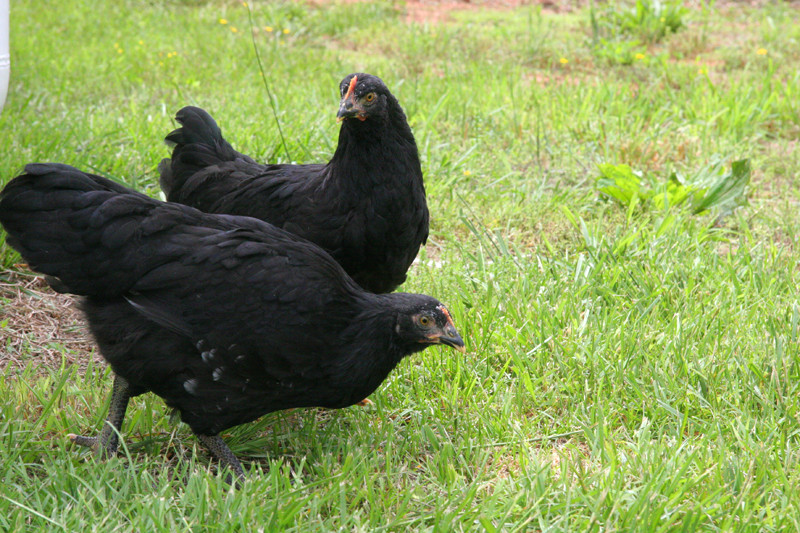
Here they are when I first got them. They were about the age of the baby chicks I have now. And here’s Lilac just two evenings ago, right up front, looking for handouts.
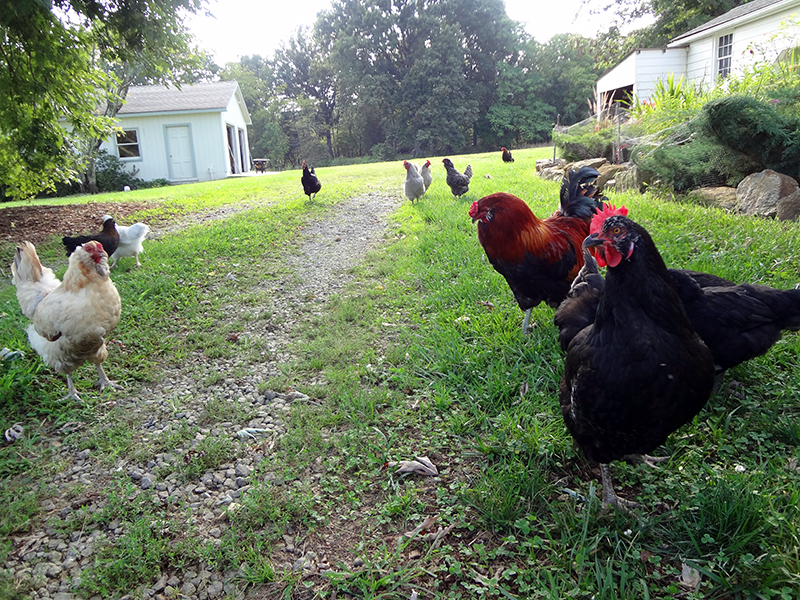
They were good chickens, but now they’re just stories and photos on the pages of this blog.
Goodbye, girls.
 Leucojum aestivum ‘Gravetye Giant’
Leucojum aestivum ‘Gravetye Giant’ Magnolia ‘Jane’ (right behind Tuck)
Magnolia ‘Jane’ (right behind Tuck)








